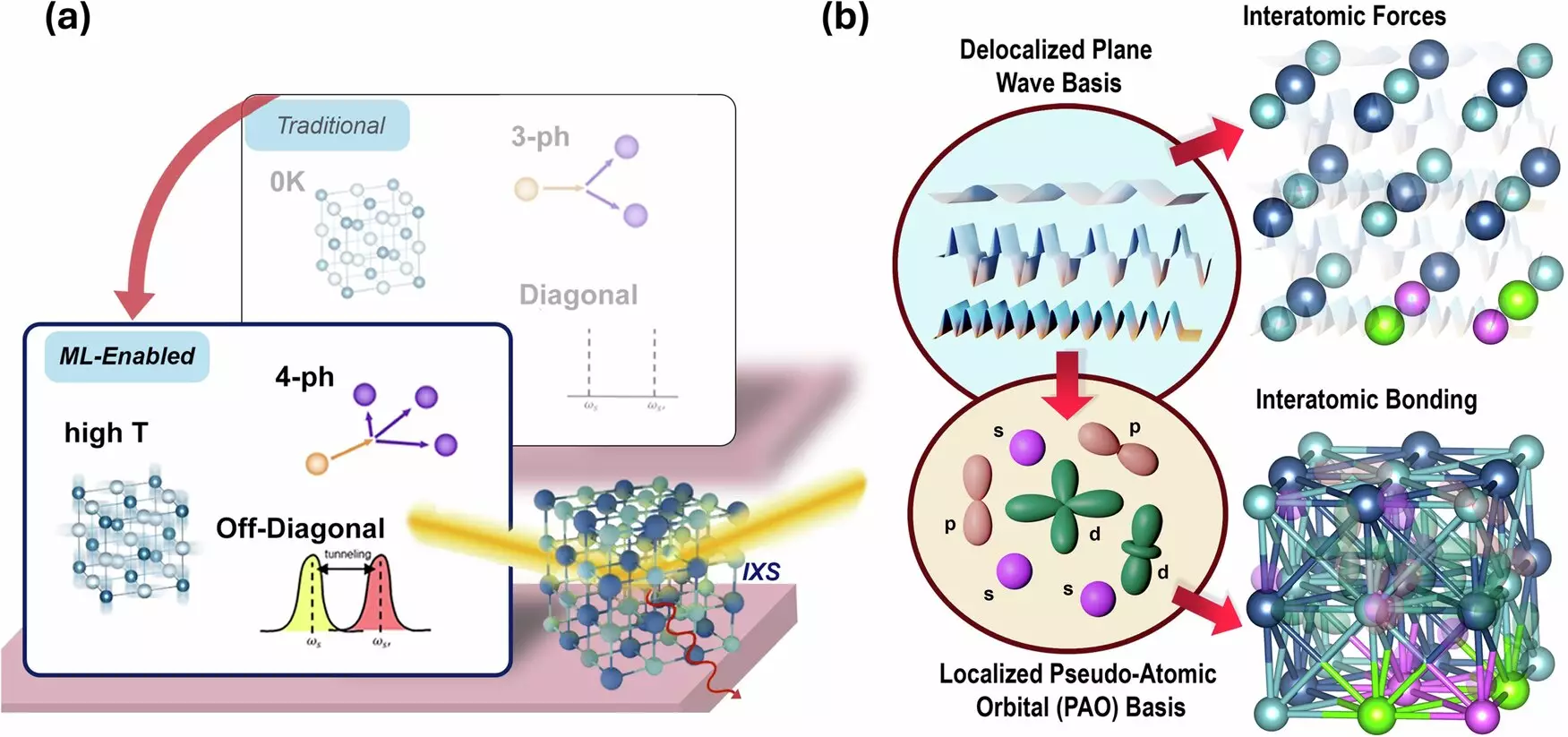In the realm of advanced materials science, Germanium Telluride (GeTe) stands out as a compelling candidate for thermoelectric applications. This material has intrigued researchers due to its unique phase-change properties and its potential to enhance energy conversion technologies. The newfound understanding of GeTe’s thermal conductivity—particularly its unexpected surge with increasing temperature—marks a significant milestone in material research, as investigators dive deeper into the phenomenon driving this behavior.
Historically, GeTe’s cubic phase demonstrated a perplexing behavior: as temperatures rose, its lattice thermal conductivity unexpectedly climbed. Such findings raise essential questions: Why does this occur? While many studies affirmed the presence of this anomaly, the underlying mechanisms remained obscure until recent research led by Zhiting Tian from Cornell University shed light on this conundrum. This pivotal research not only deepens our grasp of GeTe but also broadens our understanding of a category of materials known as phase-change materials.
The Role of Machine Learning in Material Science
One of the remarkable aspects of this study is the innovative use of machine learning combined with X-ray scattering techniques. By leveraging computational power to analyze GeTe’s structural behavior at various temperatures, Tian and her team crafted a detailed explanation for the increased thermal conductivity. Machine learning allowed the researchers to efficiently assess complex interactions within the material while accounting for temperature variations and phonon scattering phenomena. This computational approach not only provided richer insights but also demonstrated the significant potential of machine learning across other material investigations.
The researchers revealed that as GeTe transitions from a rhombohedral structure to a cubic configuration, notable changes occur at the atomic level. Specifically, the bond strengths between second-nearest neighbors—Ge-Ge and Te-Te—are significantly enhanced. The studies showed that the Ge-Ge bond strength increased by approximately 8.3%, while the Te-Te bonds exhibited a remarkable increase of about 103% as temperatures escalated from 693 Kelvin to 850 Kelvin. Such enhancements suggest that the atomic interactions within GeTe are not merely static; instead, they dynamically change in response to temperature, further contributing to the thermal conductivity phenomena observed.
What makes this research particularly valuable is its potential application beyond Germanium Telluride. The insights garnered regarding bond strengthening and increased thermal conductivity have implications for other materials exhibiting similar characteristics, such as tin-telluride and tin-selenide. By recognizing these parallel behaviors, the study opens up new avenues for exploration in materials that promise efficient energy solutions through phase-change mechanisms.
As society pushes towards sustainability, phase-change materials like GeTe present promising opportunities for capturing and converting waste heat into usable energy. Understanding the molecular dynamics at play allows for enhanced material design that can maximize efficiency in thermoelectric applications. With the challenges posed by traditional thermoelectric materials like lead telluride—primarily its toxicity—research that uncovers viable alternatives like GeTe could lead to more environmentally friendly technologies.
The investigation by Cornell researchers marks a crucial step towards unraveling the complexities of thermal transport in phase-change materials. By integrating advanced computational techniques with empirical methods, they have not only elucidated the behavior of GeTe but also set a precedent for future studies in material efficiency and environmental sustainability. As exploration in this area continues, the insights gained may pave the way for innovative materials that can enhance thermoelectric performance and contribute to a more sustainable energy future. Researchers are now tasked with extending these findings—could they unlock even further potential in energy-efficient technologies? The promise is as compelling as the research itself.

